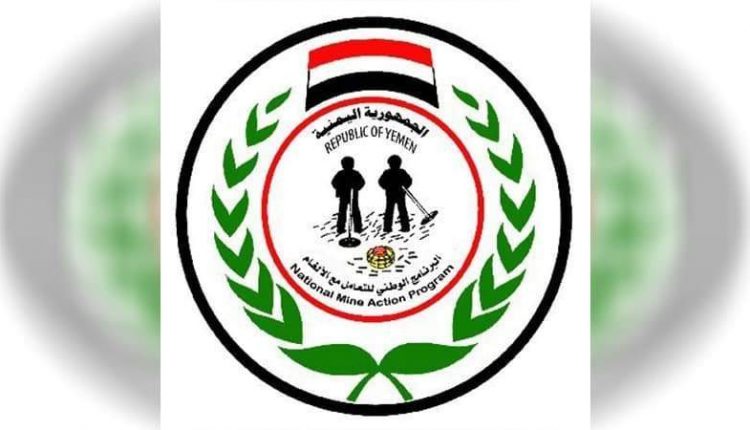Mine Action Center Requests Detectors to Clear Yemen of Mines
The Executive Center for Mine Action renewed its demand for the international and humanitarian organizations working in Yemen to provide the necessary detectors and supplies to enable it to clear the areas of Hodeidah in particular and Yemen in general.
“We have followed the statement issued by the UN Mission in Support of the Hodeidah Agreement, “UNMHA”, and as we encourage more attention to finding solutions to the problem and contributing to the protection of civilians from the remnants of aggression,” the center said in a statement.
The center’s statement was surprised that the UN Mission to Support the Hodeidah Agreement “UNMHA” ignored the challenges facing the center, represented in the lack of equipment and supplies necessary to clear the areas.
It pointed out that the UN statement avoided not mentioning the US-Saudi aggression, although it prevented the development program from buying and importing devices and polluting large areas of different parts of Hodeidah governorate with cluster bombs.
For his part, the Deputy Director of Al-Hazm Hospital Authority, Salah Bahjouj, revealed in a statement to Almasirah, that since the start of the truce, the hospital has received 123 casualties from the remnants of the aggression, including 56 children and 17 women.
Bahjouj considered the arrival of such a large number of injured within a short period as a result of the United Nations’ refusal to provide detectors for the remnants of the aggression. The death toll from mines and cluster bombs remnants by the US-Saudi aggression in Yemen has increased since the implementation of the UN- sponsored truce last April 2, as the citizens return to their homes and villages.
During the truce, it was recommended that there be humanitarian treatments regarding the provision of mine detectors and the necessary supplies for the Executive Center.
The Executive Center for Mine Action stated that the total number of victims of mines and cluster bombs amounted to 324 citizens, 108 of them were killed and 216 were injured. The center explained that the cluster bombs’ death toll from cluster bombs was 75 citizens, 18 of them were killed and 57 others were injured.
In this context, Dr. Anis Al-Asbahi, the official spokesman for the Ministry of Health in the Government of National Salvation, wrote in a tweet: Almost six months have passed since the start of the truce, and the number of victims of cluster bomb remnants has been rising, without the humanitarian truce providing any solution for mines and cluster bombs and the provision of tools to cleanse the areas from the remnants of the war, since it was announced in Jordan until today.
Earlier, two citizens were injured on Friday in the explosion of a landmine left behind by the US-Saudi aggression in Al-Ghail district, Al-Jawf governorate, Almasirah Net correspondent reported.
The cluster bombs dropped by the aggression’s aircraft, as well as the mines and munitions left behind by the aggression, are spread in farms, pastures, residential areas and in civilian facilities, causing a high number of casualties.
Saudi Arabia, backed by the United States and regional allies, launched the war on Yemen in March 2015, with the claim of bringing the government of former Yemeni president Abd Rabbuh Mansour Hadi back to power.
The war has left hundreds of thousands of Yemenis dead, and displaced millions more. It has also destroyed Yemen’s infrastructure and spread famine and infectious diseases there.
The victims of cluster bombs have reached more than 25,000 civilians since the beginning of the US-Saudi aggression on Yemen. The Director of the Executive Center for Mine Action, Brigadier General Ali Safra, has pointed out that the support and resources allocated to field clearance do not reach the level of 2% of what is required to be cleaned.
The director of the Executive Center for Mine Action Brigadier Ali Safra stated that Hodeidah, Al-Baidha’a, Marib, Al-Jawf, Nihm and Sa’adah are the most infested areas for mines and bombs, in which the aggression used the most deadly and latest military technology in the country.
He explained that the Center is continuing to work to clear areas contaminated and affected by the bombs and mines of the US-Saudi aggression, pointing out that mines and remnants – especially cluster bombs – have become a national issue and a societal problem that must be disposed.
The Executive Center for Mine Action announced the discovery of 544 mines and cluster bombs left over from the aggression during the first week of January 2022.
The US-Saudi aggression refuses to enter equipment and devices to detect explosives in light of the silence of the United Nations, which bears the greatest responsibility for the continued casualties due to the remnants of the aggression, including mines and cluster bombs.
The Mine Center’s field work is concentrated in dangerous areas and densely populated directorates. However, the UN’s curtailment of its support programs and the coalition’s prevention of the introduction of detectors raises the specter of death that threatens the lives of women and children.

